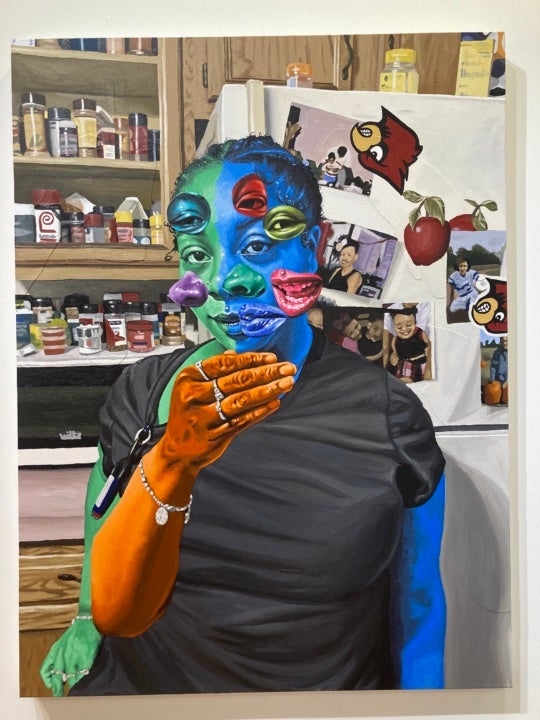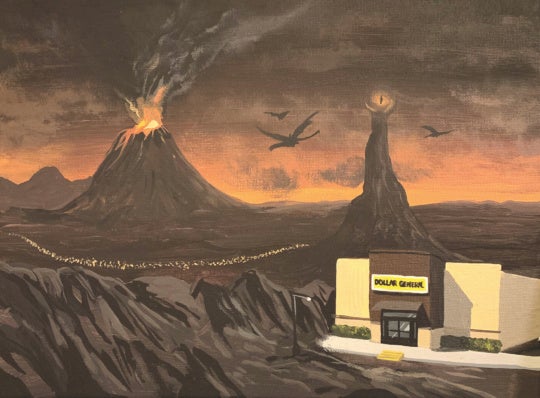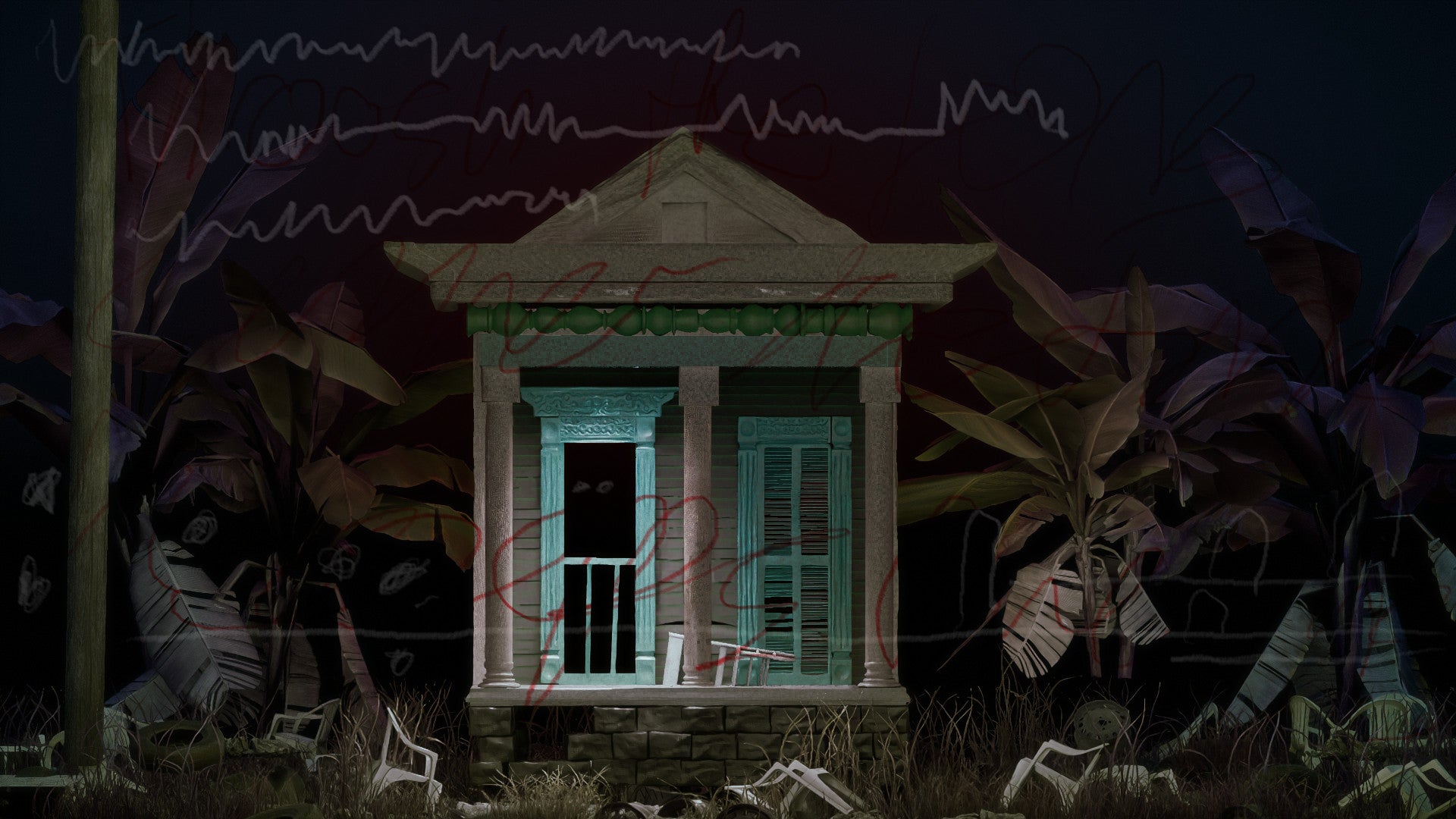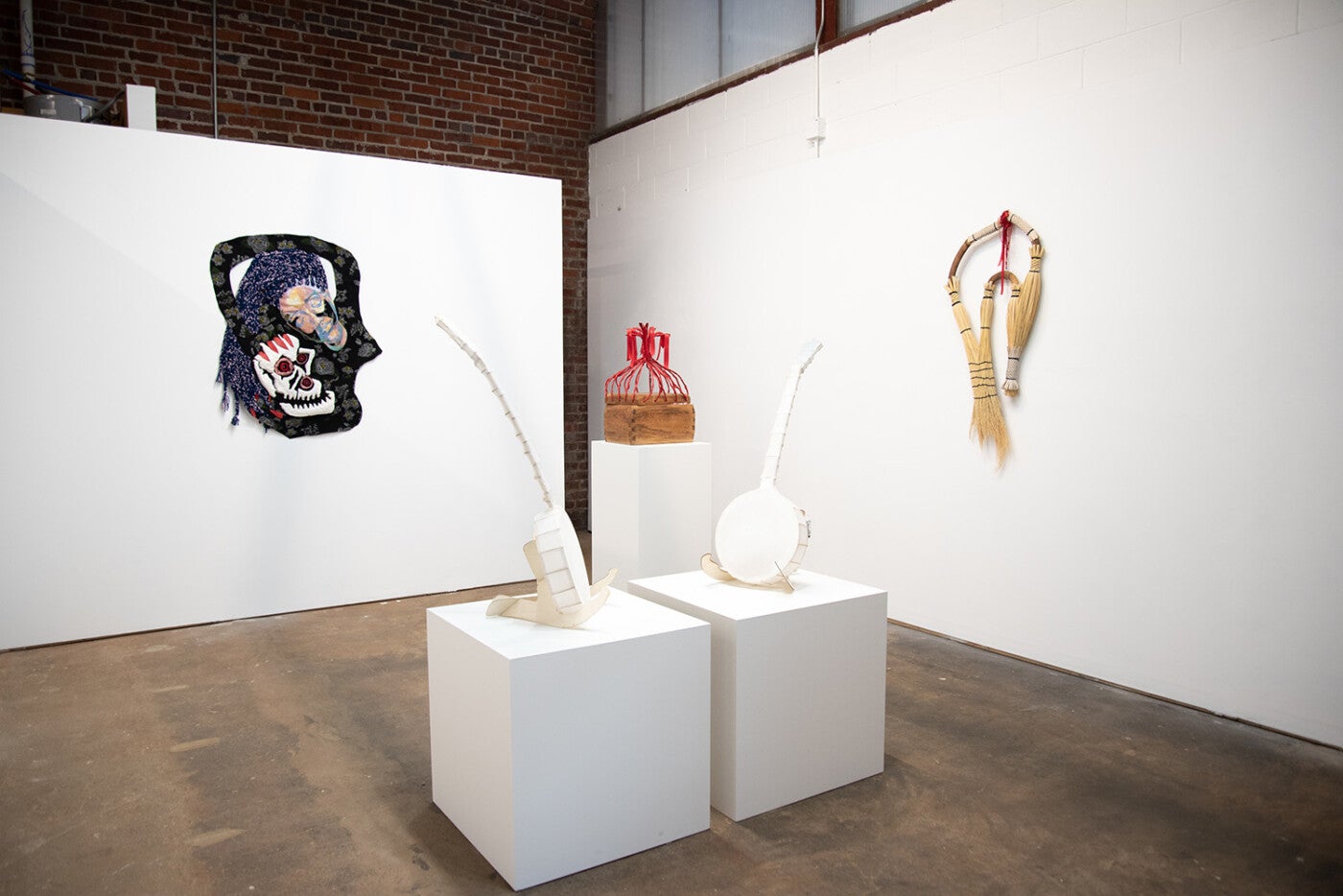
Buried the Roots for Now, Jasmine Best’s solo exhibition at South Carolina’s Tiger Strikes Asteroid Greenville, presents a handful of personal and allegorical works that tackle the continual displacement, erasure, and often whitewashing of Black property, history, culture, and influence from the American South. Closer readings of folk tales, clarifications of oral histories, and historical corrections are the narrative basis for many works in the show. Working with a medley of Southern craft traditions whose origins often lie with enslaved people of the African diaspora and their descendants in the Caribbean and colonial North America, Best reclaims their histories and uncovers the roots—while emphasizing digital culture’s new challenges.
Two plywood-frame banjo silhouettes covered in stark-white abaca paper—Picking Up What You’re Putting Down (2024)—open the exhibition with a straightforward representation, while a print made from handmade paper and stretched-out stencils spells out a refrain of the show’s themes: “belong, place, self.” Four brooms come together to form Power Object #2 (2024), remarking upon the superstitions associated with sweeping by fashioning once-useful items into an infinite loop to harness their potency. Blood-red ribbons and beads form a heart-sized lump at the sculpture’s weakest point, emphasizing the structural wound instead of concealing it.
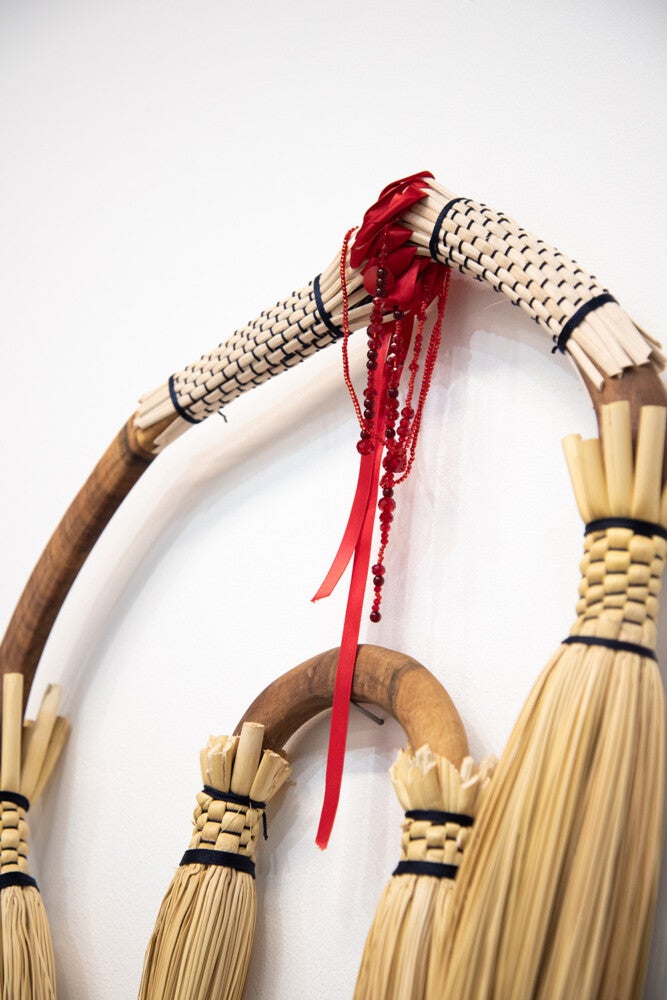
Sea Breeze Inheritance (2019), a textile collage with a video component, is more reminiscent of a photo backdrop than an heirloom quilt. The artist admits as much, brandishing a tall plinth with reverse cloth letters to catch the camera’s lens. The scene’s other elements—contours of a palmetto tree, a lamp post, and pillars covered in strawberry-pattern fabric bars meant to resemble bricks—aren’t sewn flat, and their corners flake with the slight gusts coming into the gallery.
Between the pillars stands a slate gray fabric figure resembling a cut-out or peep-through board found at a seaside tourist attraction. A video projects onto the figure from across the gallery; the stand-in this time is Best’s maternal grandfather, Luther McQuillan. His image appears as a shifting montage of family photos, soon to be submerged and washed away by a high tide. By the sequence’s end, viewers are left with the blank gray figure for a few uncomfortable beats until the recording resumes and the damage starts again.
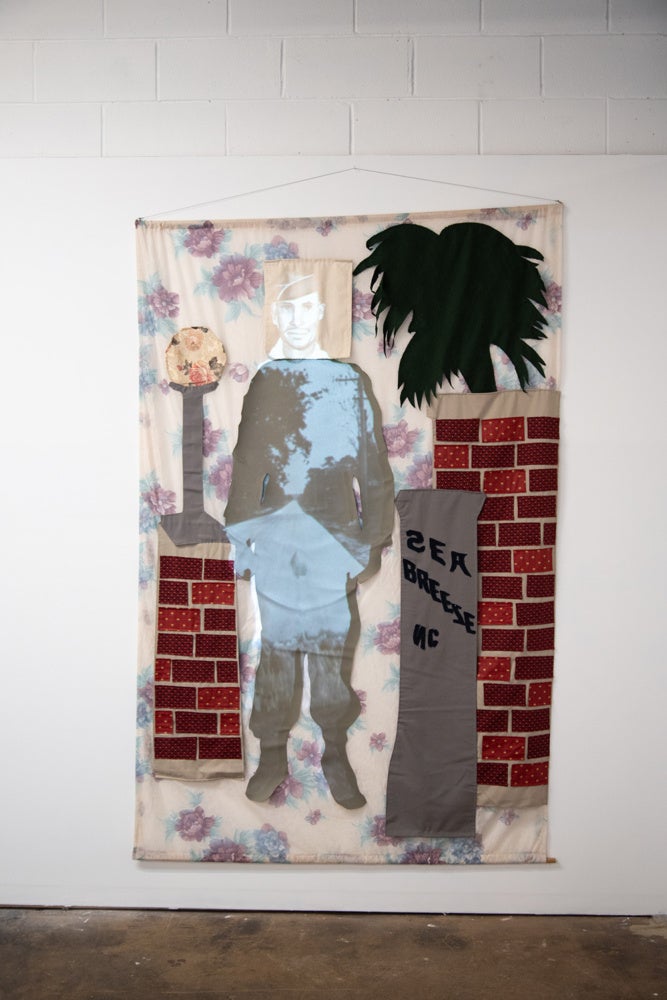
Sea Breeze Inheritance creates a monument for which there isn’t one, a memorial for the unincorporated section of the North Carolina coast that was, for decades, a sprawling resort and vacation destination for thousands of Black and Indigenous Southerners. Black businesses, including seafood restaurants and shoreside hotels, thrived on tracts held by Black landowners in New Hanover County, creating a tranquil refuge from prejudiced, segregated society. The resort also included bathhouses, a small amusement park, and an informal jail, keeping town troubles outside the grasp of the mainland’s White police force.1
Best’s family comes from Sea Breeze. McQuillan, the subject of Inheritance, was a commercial fisherman birthed from a long line of them and was a well-known, lifelong resident of the town. When Hurricane Hazel ravaged the region in 1954, many folks fled as, subsequently, federal and municipal governments offered no help rebuilding. With the coast significantly eroded, Wilmington developers swiftly encroached. “Others, like my family, stayed,” Best wrote in an artist statement. “They stayed as the city tried to forget them, erase their history, and sometimes push them off their land.”2
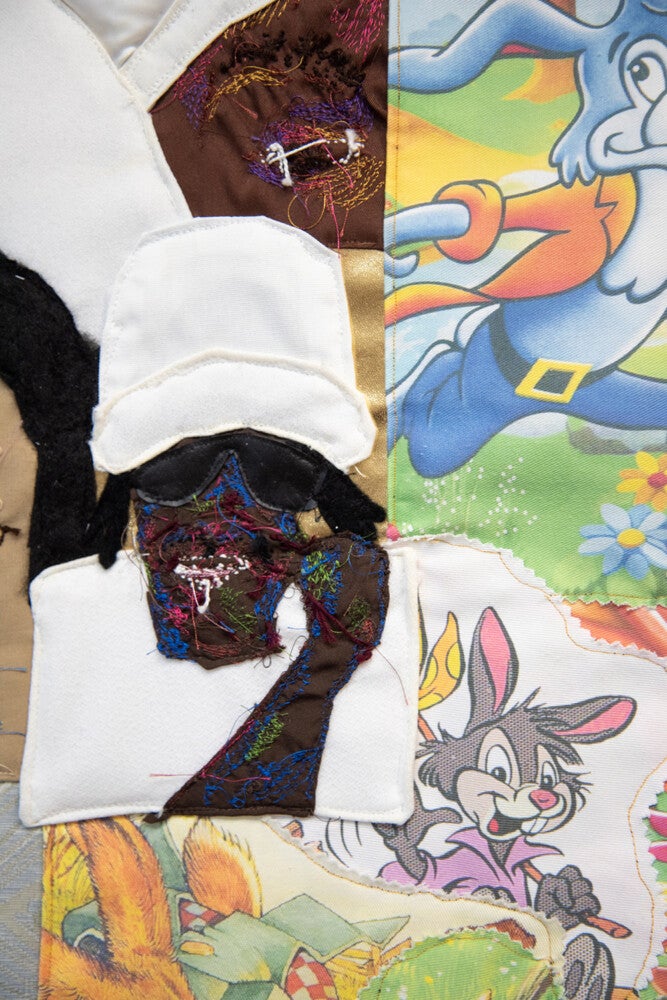
On a more universal note, Conqueror’s Laughter (2024) juxtaposes embroidered illustrations of Black creators taken from reaction memes and viral videos, the versos of them facing the viewer, with threads hanging and details hard to decipher—alongside a quilted collage of Br’er Rabbit cartoons from various animation studios. By placing these personal moments, which often become widely known and appropriated as digital blackface, alongside popular caricatures based on misinterpretations of Black folklore, Best addresses the conflict between the public and private. She highlights the challenge of deciding what to reveal in order to be acknowledged and what to keep private to protect genuine joy from being taken advantage of and exploited.
Best muses on this dichotomy in a video about Conqueror’s posted to social media, ending with a question that echoed through my mind as I walked through the exhibition. Thanks to the ubiquity of social media, she proclaimed, “The private lives of Black people are more public than ever. But has the understanding of them gotten any fuller?”3
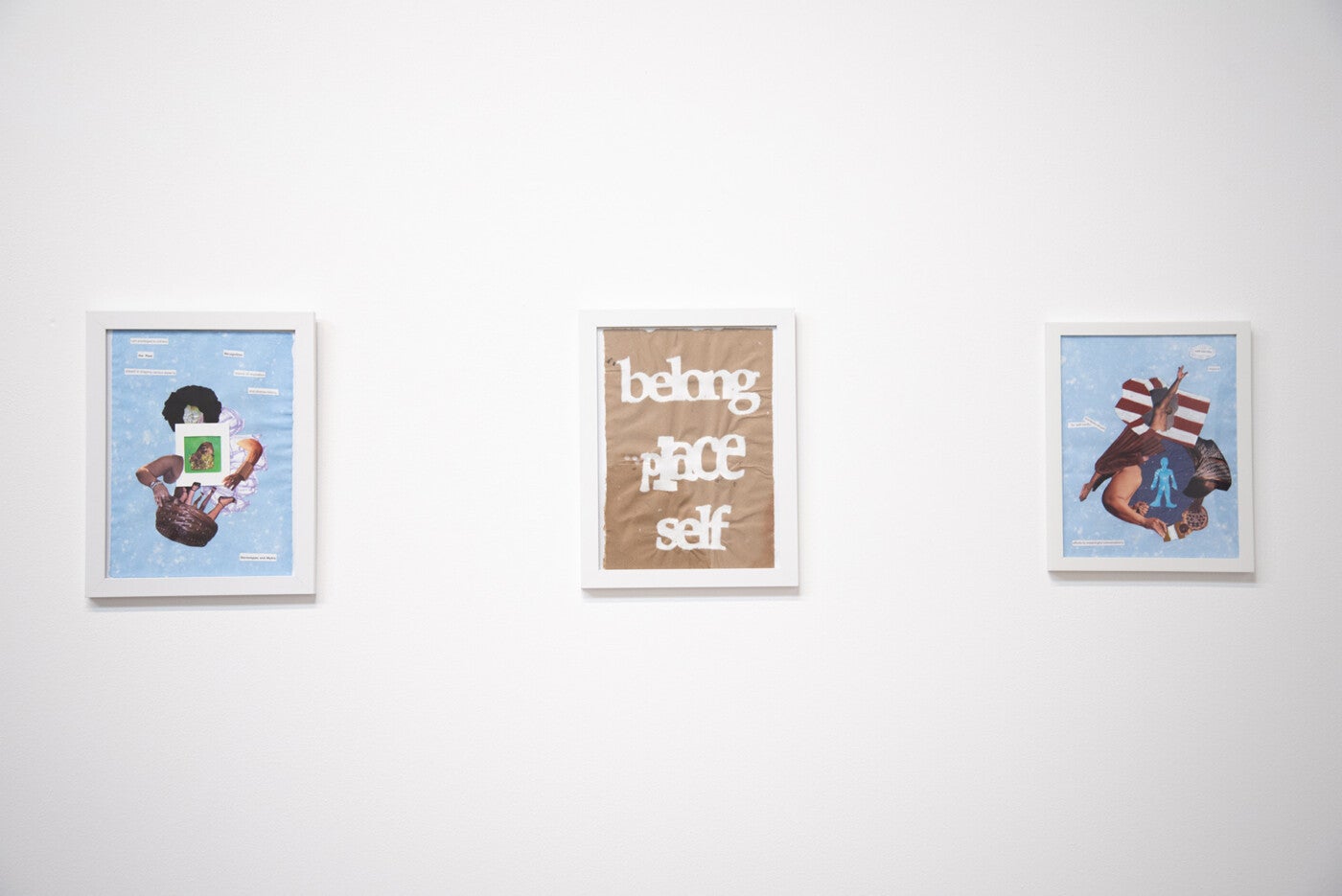
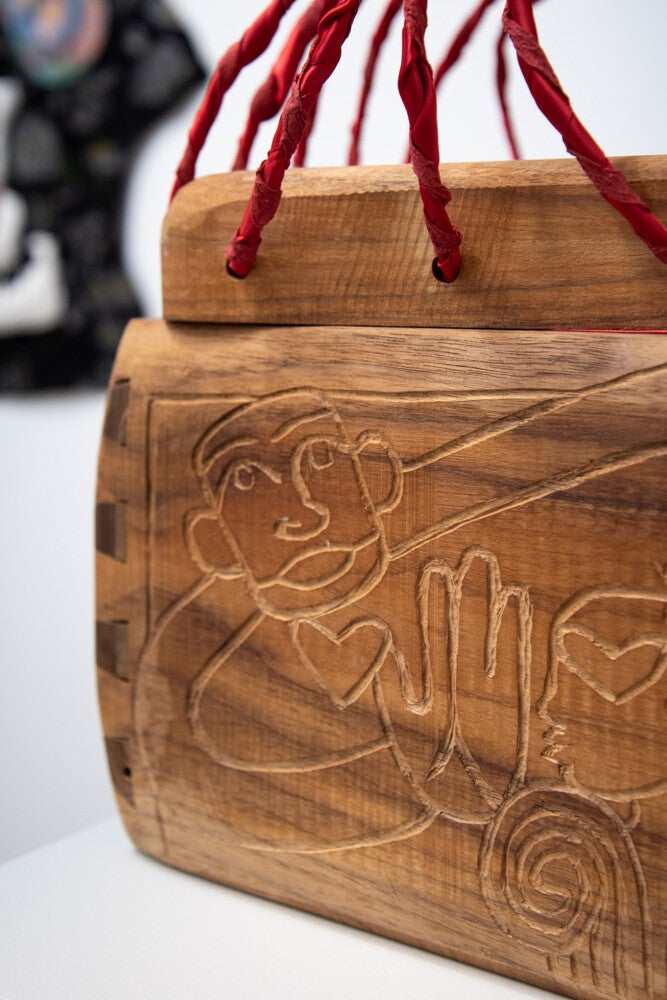
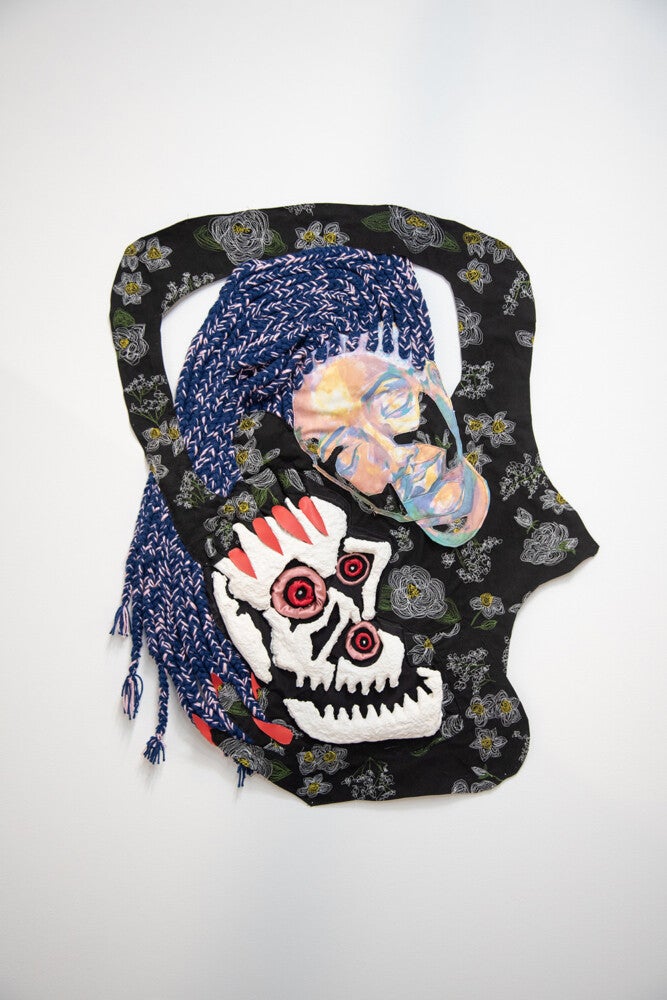
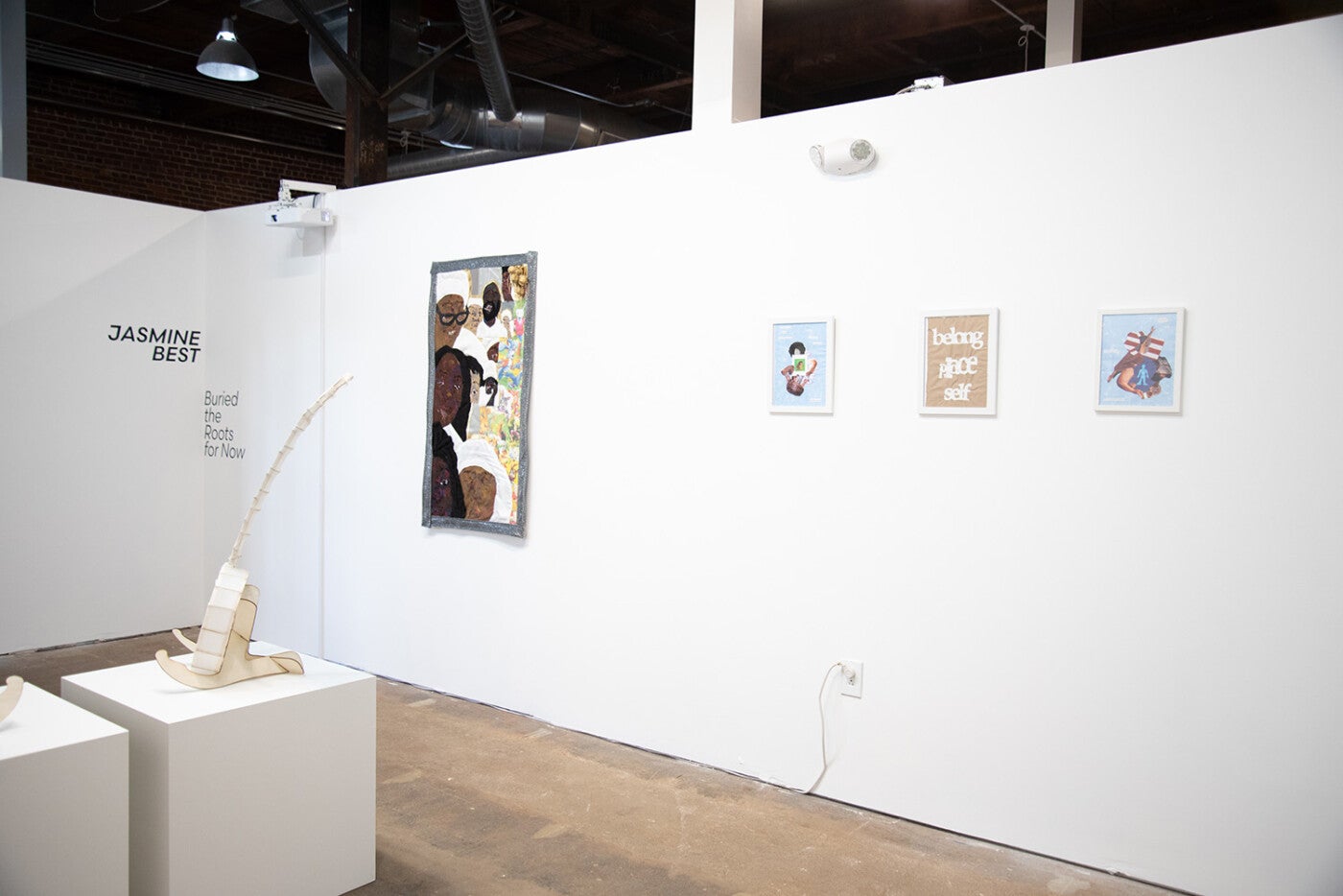
[1] “Seabreeze and Freeman Beaches (D-124).” North Carolina Department of Natural and Cultural Resources, December 12, 2023. https://www.dncr.nc.gov/blog/2023/12/12/seabreeze-and-freeman-beaches-d-124.
[2] Best, Jasmine. Sea Breeze Inheritance. Accessed September 27, 2024. https://www.jasminebest.com/art/seabreeze-inheritance.
[3] Jasmine Best | Southern Artist (@jasminebestart), “Conqueror’s Laughter” considers online spaces as the replacement for the front porch while also asking questions around understanding black interiority…, Instagram reel, May 27, 2024, https://www.instagram.com/p/C7eh2wCRWei/

